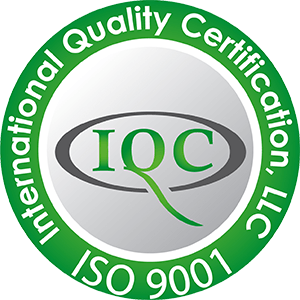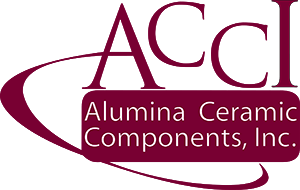This is a placeholder for the Yext Knolwedge Tags. This message will not appear on the live site, but only within the editor. The Yext Knowledge Tags are successfully installed and will be added to the website.
Fax: (724) 532-5804
sales@alumina-ceramic.com
,
This is a placeholder for the Yext Knolwedge Tags. This message will not appear on the live site, but only within the editor. The Yext Knowledge Tags are successfully installed and will be added to the website.
Our Production Capabilities
Our Ceramic Production Capabilities
Exceptional Products | Affordable Prices | Made in the USA
Exceptional ProductsAffordable PricesMade in the USA
Our Ceramic Production Capabilities
Exceptional Products | Affordable Prices | Made in the USA
Exceptional ProductsAffordable PricesMade in the USA
From Ceramic Design to Production
With over 35 years of ceramic production experience, Alumina Ceramic Components, Inc. works with you on any product you need from prototype development to resolving any issue. In every case, you'll speak with the same person when you contact us as we work toward fulfilling your order.
Press to Shape
Typically, when referring to ceramic parts that are pressed to shape, it means parts that have their net shape coming off of the tooling. The only additional work for you is what is needed to fit the parts into your application. Most of our customers add value to our product via metalization or some type of assembly.
Green Machining
Green machining is a term used for machining ceramic material prior to firing. This operation allows us to add additional configurations to a part that has been either dry pressed or iso-pressed, which you normally could not obtain by these operations directly.
These configurations could be in the form of multiple-stepped I.D.s and O.D.s as well as notches, cutouts, holes, or some type of shape on the sides of these already-formed green parts.
Post-Firing Grinding
This term refers to grinding after the firing process. Once this material is fired, the only thing harder is diamond. The only way to change the shape or size of a fired part is to grind, ream, or hone it with some type of impregnated diamond tools, such as wheels, reamers, or hones.
Ceramic parts can be reamed or ground after firing to achieve a closer tolerance than what can normally be achieved prior to firing.
O.D./I.D. Grinding
ACCI has several centerless grinders that allow us to hold tighter tolerances on the O.D. We also have an O.D./I.D. grinder that allows us to accomplish this same task. We have reamed numerous I.D.s holding tolerances to ± .0005.
Glazing
Glaze is generally considered to be a thin, glassy coating fired onto the surface of a ceramic form normally as a secondary process.
Originally, glaze was used to help prevent porosity on the outer surface of the fired ceramic body, which would, in turn, prevent the surface from becoming dirty or collecting any metallic substances.
With some materials, glaze is still used for the same reasons, but with most of the fully fired aluminas this is no longer the case. We believe that some of our customers are still using glaze because it has been specified on some type of government drawing or strictly for appearance sake.
Typically, we have been supplying all high-temperature glazes. These are glazes that will withstand the temperatures necessary for the metallizer to complete their process without deteriorating the glaze. They are normally good to temperatures around the range of 2600°F.
A low-temperature glaze can be applied to all of the alumina bodies and will normally sustain temperatures in the 1500°F to 1600°F range. As a general rule of thumb, we use the higher temperature glaze to be sure to cover the customer's maximum temperature range.
Colorization
There are three basic colors we can produce that will maintain their color integrity through the high-temperature firing: purple, blue, and black. These colors can be produced in ranges to give you a spectrum from a light pink to a dark purple and from a light blue to black.
Reasons for colored ceramics can vary from being able to recognize a white material, such as yarn or thread passing over a purple alumina, or for a visual color contrast, or for cosmetic reasons. For example, the black alumina looks very rich when plated with gold.
One-on-One Service
Call for a Free Price Quote
(724) 532-1900
(724) 532-1900
VISIT US
,
This is a placeholder for the Yext Knolwedge Tags. This message will not appear on the live site, but only within the editor. The Yext Knowledge Tags are successfully installed and will be added to the website.
This is a placeholder for the Yext Knolwedge Tags. This message will not appear on the live site, but only within the editor. The Yext Knowledge Tags are successfully installed and will be added to the website.
HOURS
This is a placeholder for the Yext Knolwedge Tags. This message will not appear on the live site, but only within the editor. The Yext Knowledge Tags are successfully installed and will be added to the website.
Monday
Tuesday
Wednesday
Thursday
Friday
Saturday
Sunday
This is a placeholder for the Yext Knolwedge Tags. This message will not appear on the live site, but only within the editor. The Yext Knowledge Tags are successfully installed and will be added to the website.
HOURS
Monday - Friday
8:00 AM - 4:30 PM
CONTACT US
This is a placeholder for the Yext Knolwedge Tags. This message will not appear on the live site, but only within the editor. The Yext Knowledge Tags are successfully installed and will be added to the website.
Hi. Do you need any help?
Privacy Policy
| Do Not Share My Information
| Conditions of Use
| Notice and Take Down Policy
| Website Accessibility Policy
© 2024
The content on this website is owned by us and our licensors. Do not copy any content (including images) without our consent.



Share On: